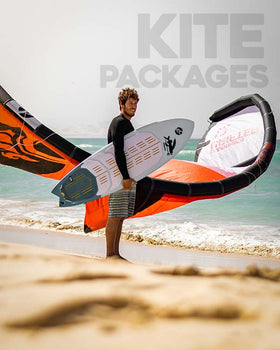10 tips for tow in foil surfing
10 tips for tow-in foil surfing
Ever since those videos of Kai Lenny foil surfing open ocean swell and paddling into one wave, popping out the back and pumping out to catch the next wave hit the internet, people have been slack-jawed and bug-eyed by the apparent sorcery of foil surfing. Many, no doubt, viewed these videos and thought this was something only Hawaiian demigods could do. Slowly, however, thanks to the industry frontrunners like Gofoil, Naish, Slingshot, and Liquid Force, bringing affordable production models to market, more people are realizing you don’t have to be Kai Lenny to get in on the action and you don’t have to have Hawaiian waves either. In fact, as Kai has repeatedly emphasized, small mushy waves that can be found nearly anywhere, are all you need to make the magic happen. Yes, there is a learning curve to conquer, but with a bit of practice, foil surfing is accessible to any decent surfer.

By far, the easiest way to get started foil surfing is by getting a friend and a jet ski and towing into waves. This is going to allow you to practice your foiling skills while you tow and when you find a bump to get on, you can just let go of the tow rope and ride. Since you don’t have to wait for the waves to break to catch them, tow in foil surfing gets you longer rides with way less stress, danger, or downtime. It will also get you the experience you need to pursue foil surfing on your own since once you get the hang of riding waves on the foil, you will be much better prepared to start paddling into waves. Now, when you start paddling into waves you will be moving from the new skills of catching the wave, popping up, and getting your feet in the right place into more familiar skills versus having to learn these new skills and then having to learn how to ride the wave on the foil, too. This is going to make the experience much more enjoyable not to mention boosting your learning curve.
So, what do you need to know to start towing into waves with a ski? When I first started tow in foil surfing, I tried to find some tips and instructions but found nothing. After a dozen or so sessions, however, I learned some basic protocols that I can share with you to make your experience just a little bit easier.
And here they are:
- The Golden Rule. Don’t mar the wave. The most uncouth thing you can do to your tow partner is to screw up the wave face. Tow your partner onto the wave and then get off of the wave face.
- Maintain a comfortable and uniform speed. Nothing makes the experience more unnecessarily challenging than bad speed control. The best way to maintain a steady speed is by keeping the RPMs steady. The speedometer will fluctuate as you move over the bumpy terrain of the ocean whereas riding with consistent RPMs will provide your tow partner with a steady pull. Some riders will prefer going faster while others will prefer going slower. It’s just a matter of finding the RPMs that the rider prefers. Establish what RPMs is comfortable for each rider.
- Whenever possible tow your partner up sideways to the swell and not out through the swell. This is easy to do and will make things a lot easier for your partner. If you tow up through the swell the rider will get yanked around as a swell first rolls under the ski, slacklining the rider, and then rolls under you yanking you through. Towing up sideways will have the ski and the rider both going over the swell at the same time so the rider won’t get yanked around.
- Identify the starting point. Wherever you ride there may be an outermost point where the waves are breaking. A little bit out from that point is the optimal place to catch the best and longest rides. After each ride, make your way back to that point. This way you aren’t randomly cruising around. If there isn’t a desirable wave when you get there simply troll back and forth parallel to the break until you find your wave.
- If you are towing out, the best way to deal with breaking waves is to punch straight out through them. This can be a real challenge for the rider being towed but you’ll have a better chance of making it than if you try to pull them through sideways. If you’re caught on the inside, it’s often better to load the foil and rider onto the ski to get back to your starting point.
- Unless the rider asks you to choose waves for him/her, the ski captain should take directions from the rider. Establishing some basic hand signals will help make communication easy. For example, pointing out and showing one, two, or three fingers to indicate the first, second, or third wave coming to communicate which wave you want.
- Some riders will have a preferred side to tow into waves. The ski captain should try to accommodate the rider when possible.
- When trolling for waves, the ski captain should go back and forth parallel with the waves. Once the rider has identified the wave they want to catch the ski captain should turn with the wave at a sideways angle.
- If the rider is out to the side of the ski on the down wave side of the ski, the ski captain won’t be able to turn onto the wave without slacklining the rider. The rider should be sure to get behind the ski so the ski captain can make the turn before edging out to the side of the ski to catch the wave.
- Don’t take any chances when it comes to sucking the tow rope into the intake grate or flipping the jet ski. You are going to be out in the breakers so this is no time to have something go wrong. Always point the ski straight out through the waves when you are in the breakers and be aware of what the waves are doing at all times. Stay clear of the tow rope at all times.
I hope these tips are helpful. Now, get out there, learn something new, and ride with FORCE!
Yani Dilling
Kiteboarding and Foiling Coach at FORCE Kite and Wake



Leave a comment